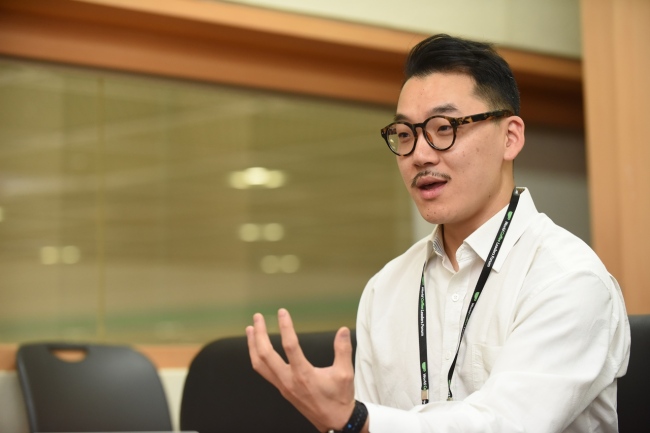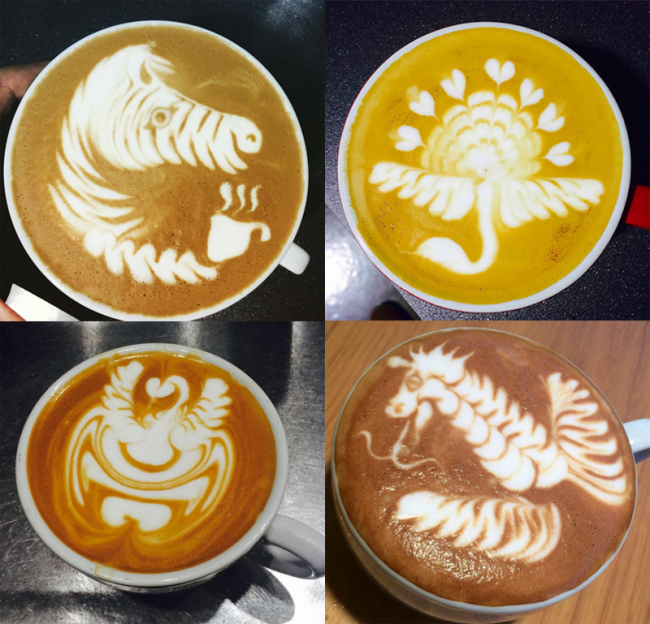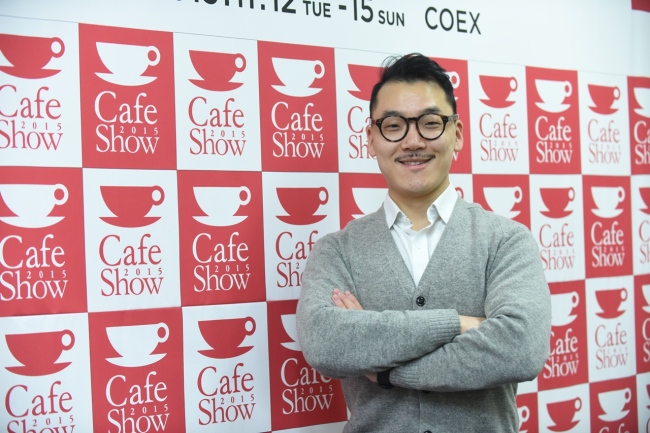 |
Caleb Cha (Seoul International Cafe Show) |
Three things led to Caleb Cha’s win at the World Latte Art Championships this year: eye-catching designs, confidence and endless practice.
“I practiced on around 300 cups of coffee a day, seven days a week, for nearly two months,” said the Melbourne-based barista, who was here to participate in this year's Seoul International Cafe Show, in an interview with The Korea Herald last week. “That made for over 12,000 cups of latte art.”
Cha, a Korean national who immigrated to Australia in 2008, had previously come in second at the 2014 Australian latte art championship and nabbed first place in this year’s competition.
“So I had a feeling that I could win (at the world championship) if I just didn’t slip up,” said Cha.
Latte art, which entails artfully pouring steamed milk into a cup of espresso to form patterns on the surface of a small coffee cup, requires attention to detail, technique and, above all, steady hands.
It was essential, therefore, that Cha remain sure of himself during the World Latte Art Championship competition, which took place in Gothenburg, Sweden, in past June.
“We’re also graded on things like confidence and presentation. Most people just focus on what they’re doing because they’re nervous,” he said.
One tactic Cha adopted was to make eye contact with the judges and explain each step of his process during the competition, which involves making six cups of latte art on the spot -- two cups for each of the three designs the contestants hand in.
“I thought it would be important to communicate with the judges,” he said.
His strategic planning, however, would have been futile against his competition, top baristas from 36 countries, had it not been for the ingenuity of his designs.
 |
Caleb Cha's latte art: (Clockwise) "Caffeinated Zebra," "Flirting Peacock," "Flying Phoenix" and dragon (Artist's Instagram) |
Cha’s three winning patterns this year were the whimsical “Flirting Peacock,” which depicts a peacock spreading its wings; “Love Triangle,” featuring a pattern of hearts; and the intricate “Caffeinated Zebra,” showing a zebra holding a cup of coffee.
“I wanted something completely different,” said Cha, explaining that some of the most common latte art patterns are tulips, swans and rosettes, or a series of leaves.
“I wanted to make something that wasn’t abstract, something the judges could instantly identify,” he said.
“That was the lengthiest process, coming up with the designs. I was constantly imagining them in my head, but sometimes, they don’t turn out the same way when you pour them. You have to keep fixing it until it works.”
Cha’s journey to latte art similarly involved tweaking things in his life until he found a passion that clicked.
After working as a financial consultant for four years in Korea, he decided to make the move to Australia in search of a calmer, less exhausting life.
 |
Caleb Cha (PR One) |
“At first, I had no experience. ... I worked odd jobs at local Korean restaurants, but that didn’t pay well,” Cha said.
That was when he discovered an advertisement for William Angliss Institute, a coffee academy in Melbourne. He decided to apply for it, finished his course, and starting working at local coffee shop Cafenatics.
“But it became kind of routine just making 500-600 cups of coffee every day,” Cha said. Inspired by his boss, who had at the time become the latte art champion of the Australian state of Victoria, Cha decided to dip his toes in the intricate art.
“I had always dreamed of going to art school,” said Cha. “My mom is an artist, so I guess I have always had an inherent talent in that area.”
Cha plans to break more new horizons in the future.
“I’m thinking of a business venture combining coffee, education and hospitality for some time next year,” he said.
Cha noted the dexterity of Korean baristas -- including Jung Kyeong-woo, who came in third at this year’s championships -- and encouraged them to think outside the box when coming up with patterns.
“Korean baristas are very dexterous,” he said. “I’m sure that with those skills, combined with creativity, they’ll be able to win in the future.”
By Rumy Doo (
bigbird@heraldcorp.com)










